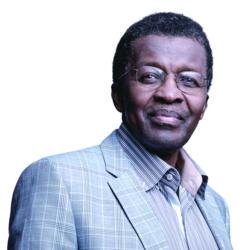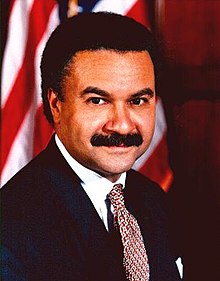Tracey “Africa” Norman always knew that the question wasn’t if she’d be found out, but how long she could go undetected.
To be black and from Newark in the mid-1970s and get plucked from a model casting call for Italian
Vogue by Irving Penn — it was the kind of success story that was unheard of, especially for someone like her. She was signed by a top agency, photographed multiple times for the pages of
Essence magazine. She landed an exclusive contract for Avon skin care, and another for Clairol’s Born Beautiful hair color boxes: No. 512, Dark Auburn, please. She went to Paris and became a house model in the Balenciaga showroom, wearing couture and walking the runway twice a day. Norman was never as big as
Iman,
Beverly Johnson,
Pat Cleveland, or the other models of color breaking barriers on international runways or on the cover of
Vogue. But she was riding that wave. It was more than she could have ever hoped for when she was a kid in New Jersey. Back when she was a boy who knew that, inside, he was a girl.
Norman still turns heads — passersby, shop clerks, waiters at the diner where we have lunch. At 63, she is strikingly beautiful, with buttery deep-brown skin that reads decades younger, and straight black hair that hangs to her ribs. That regal posture, those strong cheekbones demand attention, even as she hides her slender frame under a long black skirt and a navy shearling-lined peacoat that I later learn is from H&M. She’s open and warm but seems nervous. “It’s not easy for me to talk,” she says. She’s practiced so long the art of being both beautiful and invisible, of letting people look at her but not really see her. It’s how she managed to build a career in an industry where her job was to be gazed upon, in an era when the truth would mean certain, and possibly violent, persecution.
We’re living in a time when trans models like
Lea T and
Andreja Pejic have been the faces of Redken and Make Up For Ever, and
Caitlyn Jenner has been celebrated on the cover of
Vanity Fair. This kind of cultural acceptance makes it easy to lose sight of how dangerous it was 40 years ago — and still can be today — for women like Norman to just walk down a street. Fear of harassment from both police and civilians was constant. To live one’s life openly as a transgender woman, let alone one as a black trans woman, simply wasn’t done. The only option, really, was to “pass” in straight society.
But Norman wanted to do more than pass — she wanted to excel in the most scrutinized realm of femininity. Friends from back home in Newark who worked in fashion had been telling her for a long time that she was beautiful enough to model. It would be a better alternative than what she thought might be her only option to make a living: “I was trying to not become a sex worker,” she says. She’d just started to see her body change and her breasts grow from hormone injections. “I was thick,” says Norman. “Well, I was fat, but I say thick.” Her friends taught her how to do her makeup, how to dress for her new figure, how to present.
A makeup artist friend, Al Grundy, worked in the office of a company that dressed models backstage and always knew where fashion shows were being held in the city, which in those days were at the labels’ showrooms:
Halston,
Bill Blass. He taught Norman what to say at the door, how to become invisible. “I would just tell them that I was a student at FIT and they would let you in, but you couldn’t sit. You had to stand in the back row and it was really tight,” says Norman. “I would go to see how models walk, because I was still in training.”
One morning in, she believes, 1975, Norman was on her way to see a fashion show that Grundy had told her about at the Pierre Hotel. When she stepped out of the subway, she noticed a group of black models she recognized from magazines standing on the corner outside the hotel. She waited for them to go inside, and then slipped in behind them. Through the door, into an elevator. “My mind just kept saying, ‘Follow them,’” she says. Off the elevator, into the next room. Norman made sure she was the last person in line.
More here
















 graduating with an
graduating with an 

 and obtained a degree in 1970.
and obtained a degree in 1970. ). The black community in the U.S. has the richest and most satisfying history in our country, from slaves forced here to getting a black president elected. But the fight isn't nearly over, and as a fellow minority I'll be hand in hand with my AA brothers in the fight to end institutional racism and uplift poor black communities across the nation. America won't be great till all of its black people are.
). The black community in the U.S. has the richest and most satisfying history in our country, from slaves forced here to getting a black president elected. But the fight isn't nearly over, and as a fellow minority I'll be hand in hand with my AA brothers in the fight to end institutional racism and uplift poor black communities across the nation. America won't be great till all of its black people are. ), it has to be on the people of color, and especially black people (your fight for equality is the most important) to stand up and make their voices heard. I'll be supporting y'all at every step
), it has to be on the people of color, and especially black people (your fight for equality is the most important) to stand up and make their voices heard. I'll be supporting y'all at every step